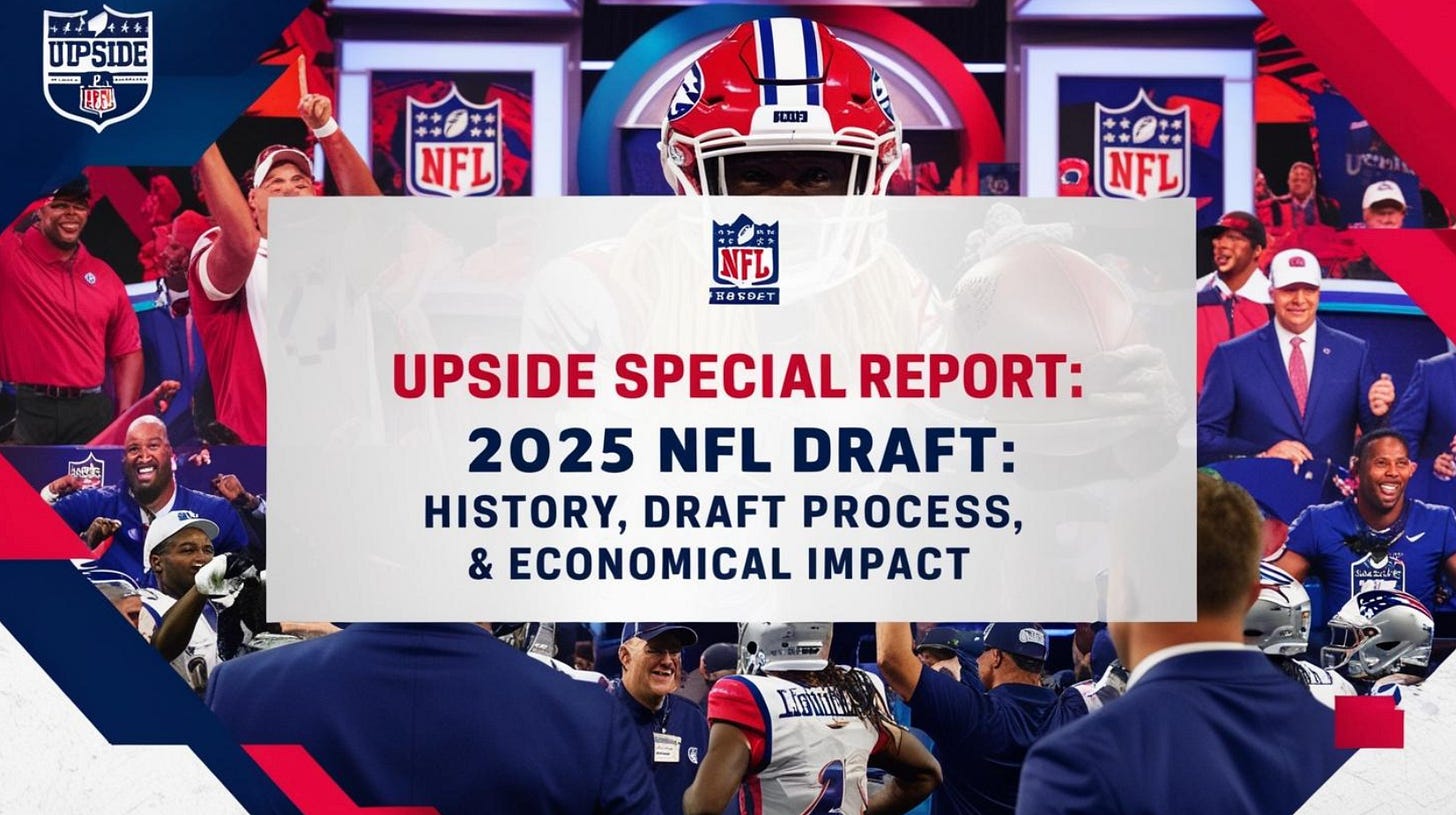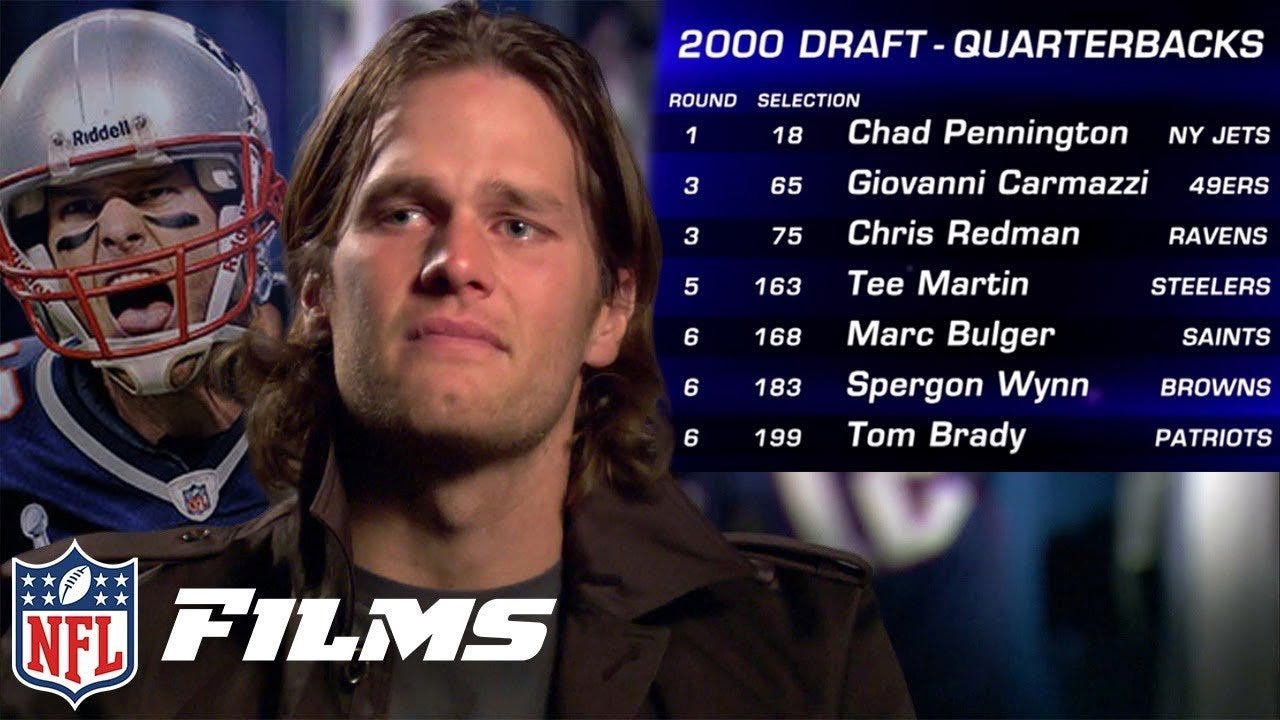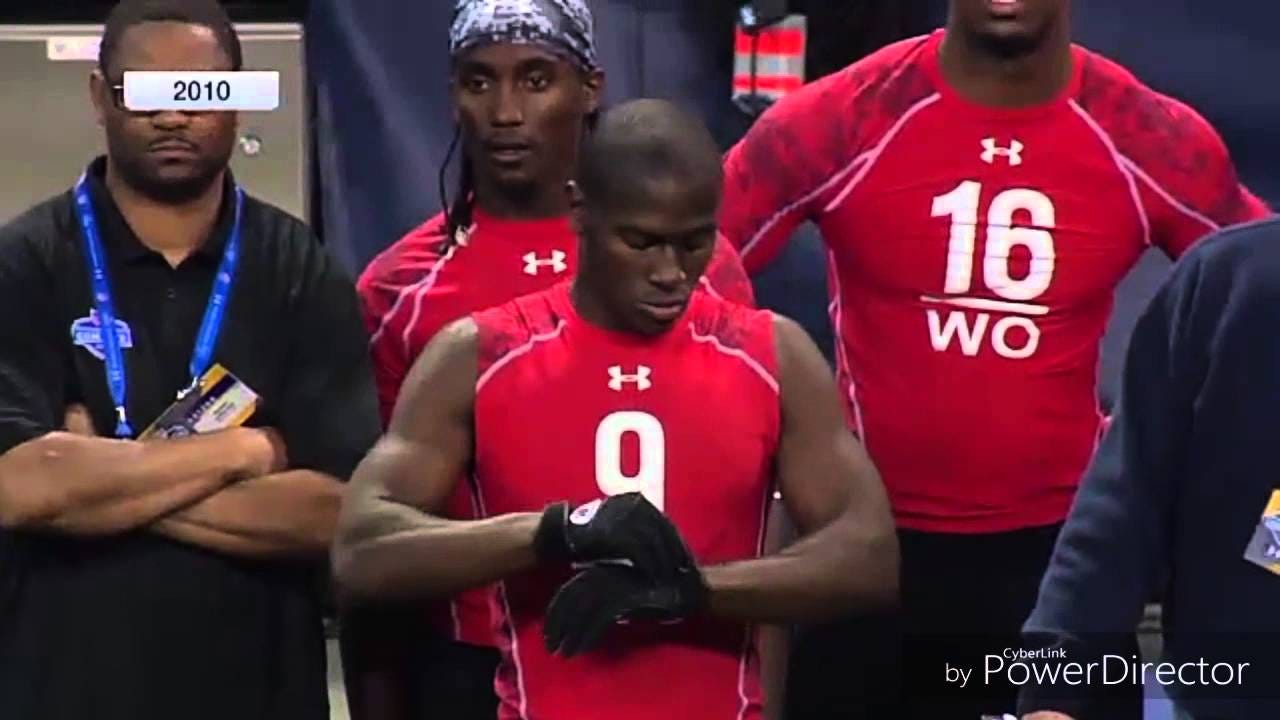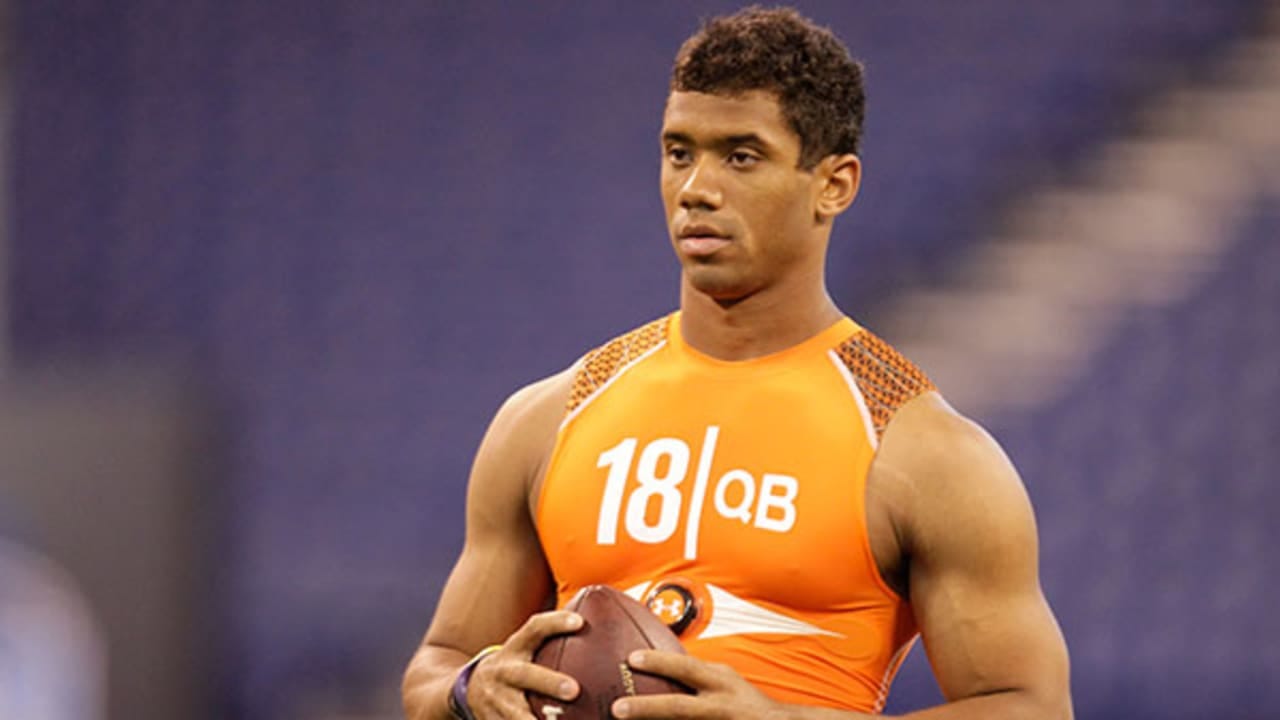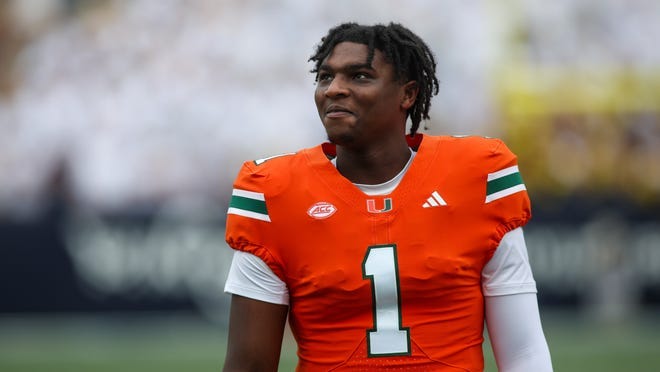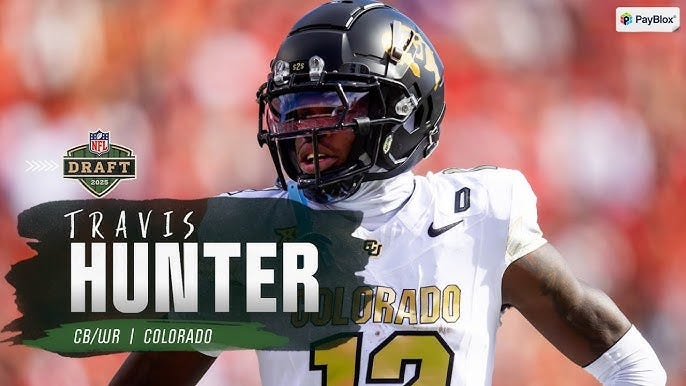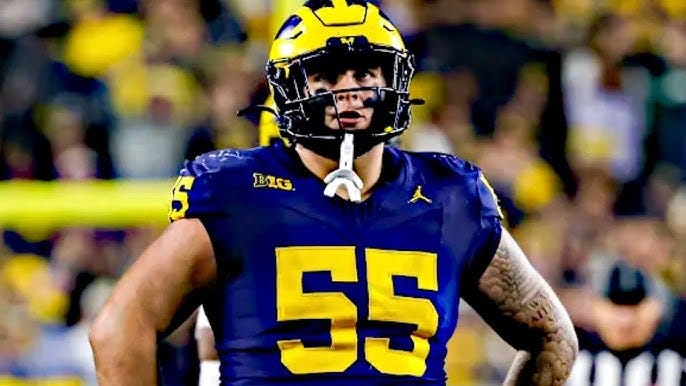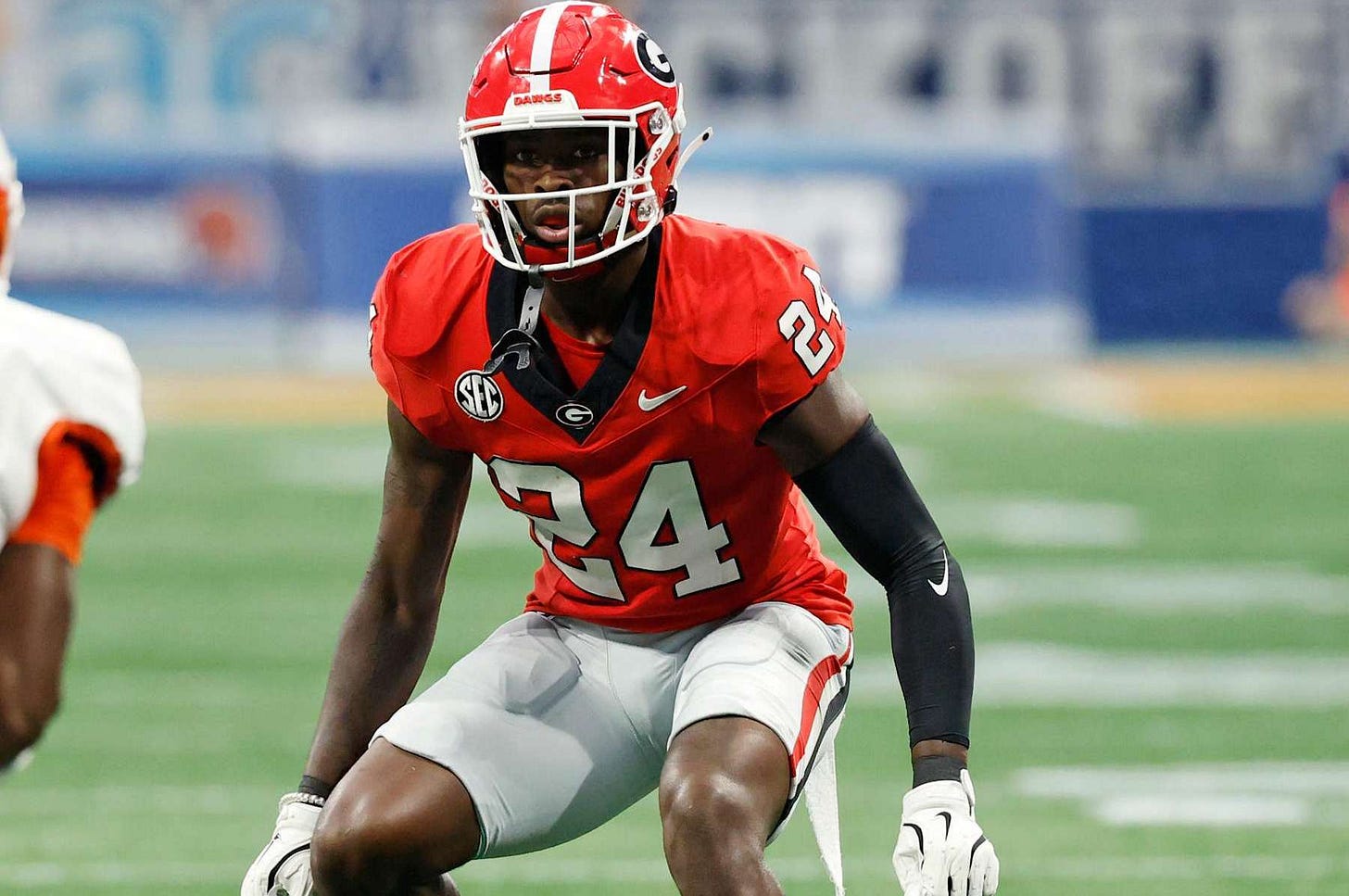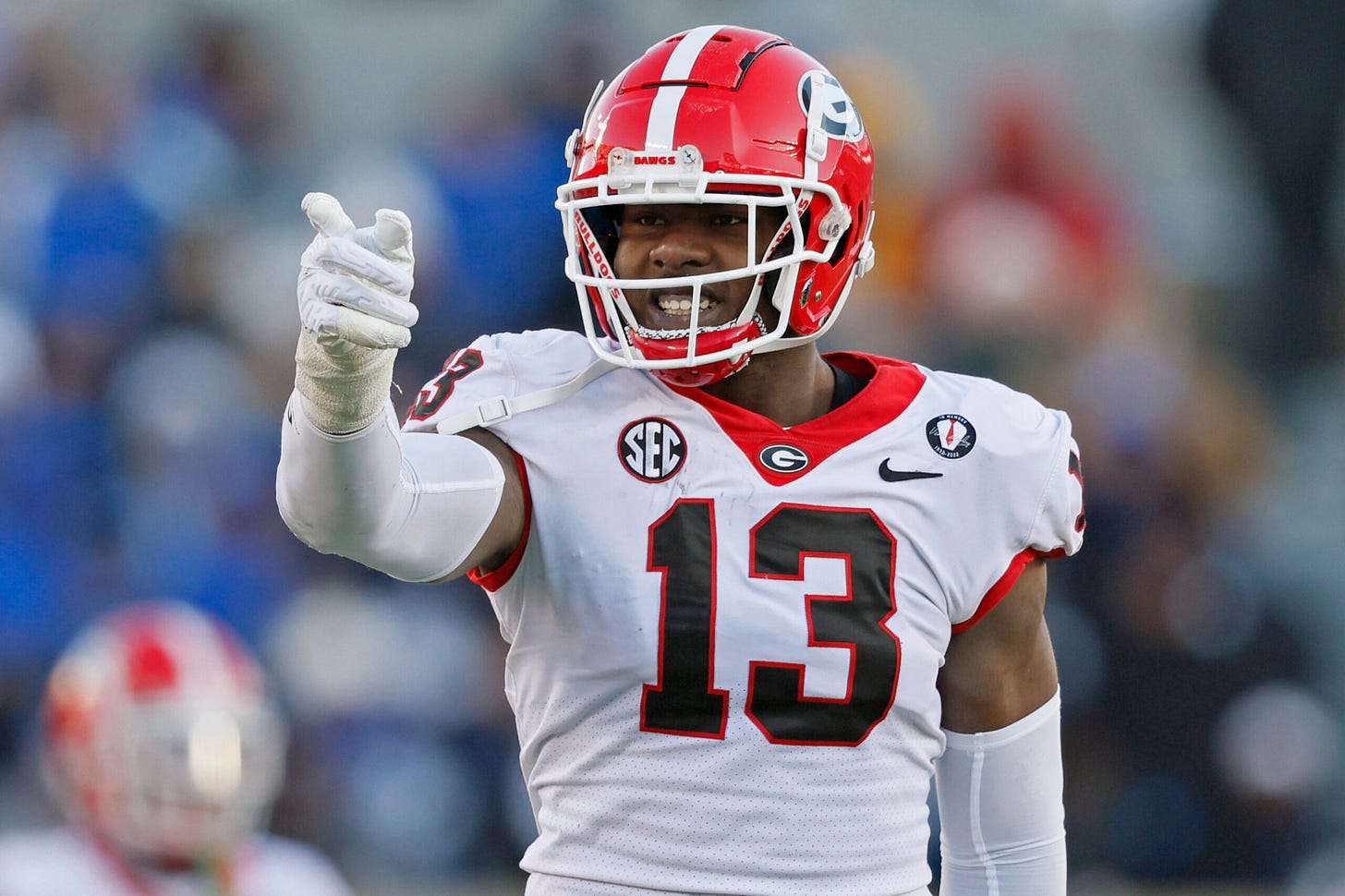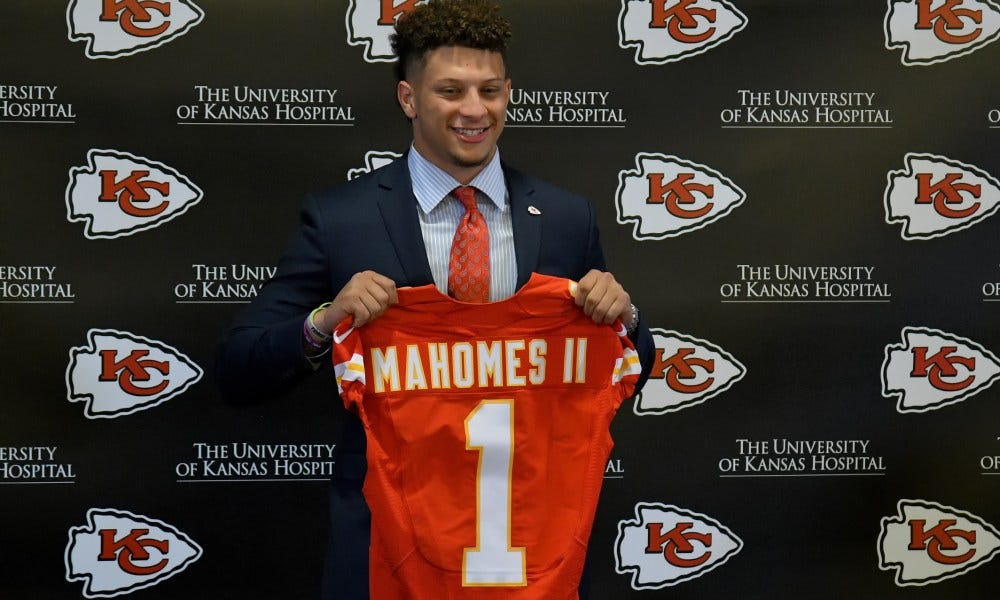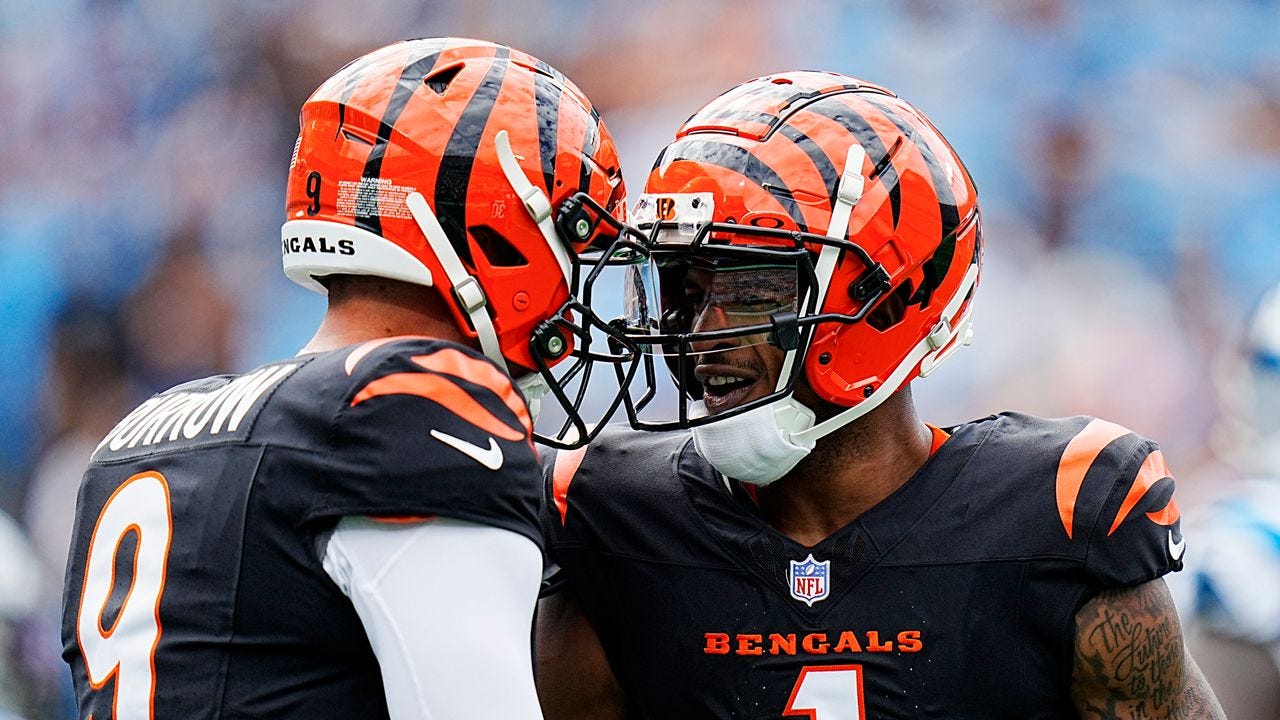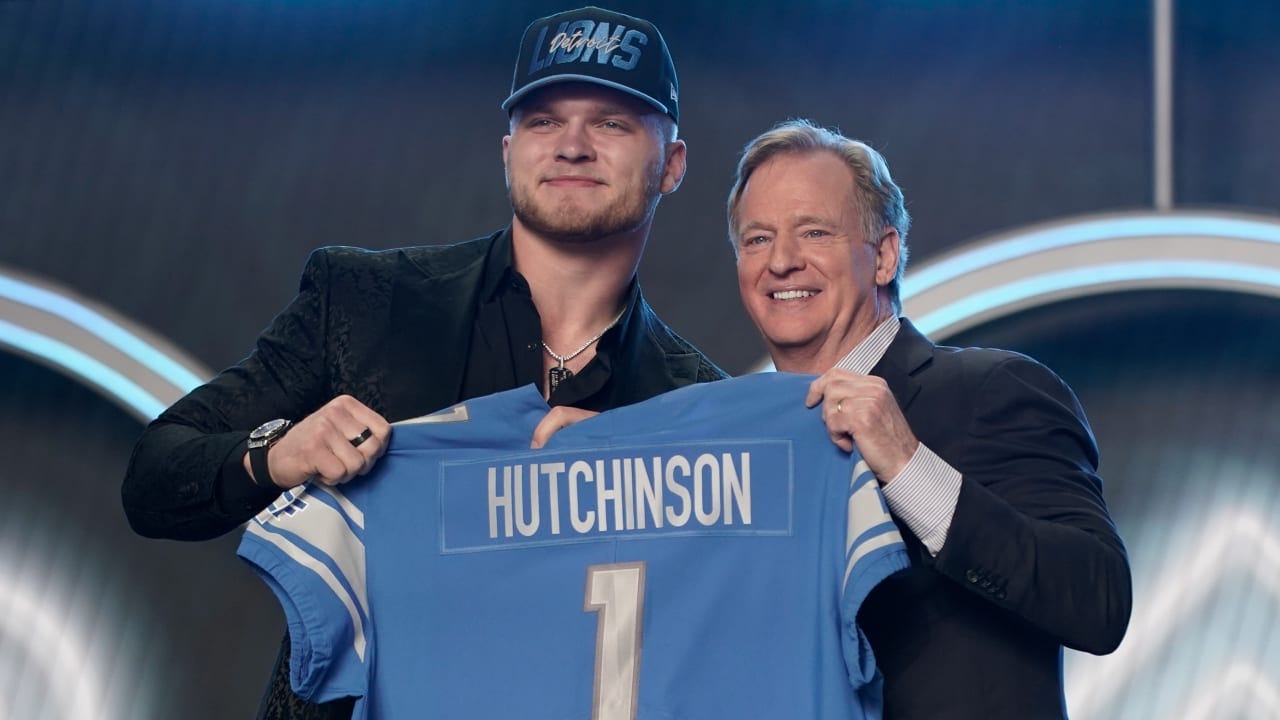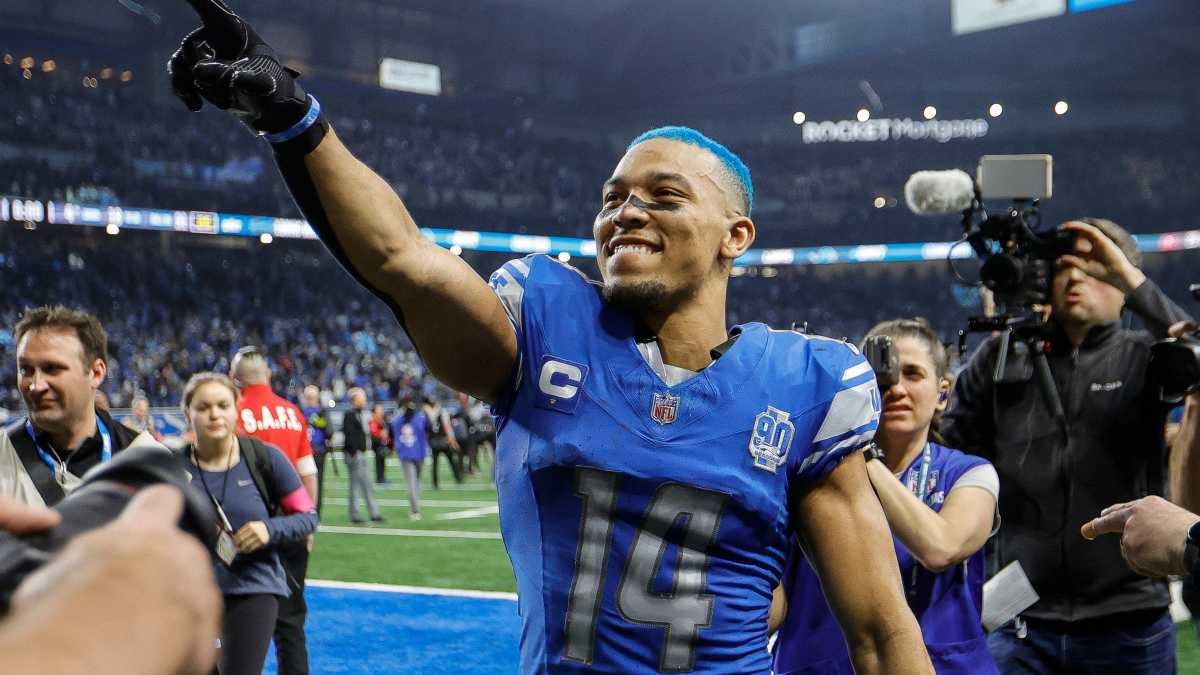🏈 Upside Special Report: 2025 NFL Draft: History, Draft Process, Success Stories & Economical Impact
Every spring, the NFL Draft becomes the most anticipated non-game event on the football calendar — a spectacle of strategy, athletic potential, and high-stakes decision-making. For fans, it’s a time of hope. For teams, it's a chance to change the trajectory of a franchise. The 2025 edition is particularly compelling: the class is top-heavy with elite prospects, yet deep enough to offer gems well into the later rounds. With quarterback talent surging, skill positions loaded, and defensive game-wreckers in the mix, this year's draft could redefine the league’s power balance for years to come.
But the draft isn’t just about picking players — it’s a carefully orchestrated process that blends data science, psychology, intuition, and football IQ. So with the 2025 NFL draft starting tonight at 8 pm we thought it would be appropriate to write an analysis which dives into the draft’s history, the intricacies of the scouting process, what scouts look for, the surprises of past drafts, and the role of technology, before previewing the 2025 class and identifying potential winners.
A Brief History of the NFL Draft
The NFL Draft originated in 1936 when Bert Bell, then the owner of the Philadelphia Eagles, proposed a system to ensure competitive balance in the league. Held at the Ritz-Carlton Hotel in Philadelphia, the first draft had no fanfare — just names written on chalkboards. The top pick was Jay Berwanger, a Heisman Trophy winner who never played a down in the NFL.
Over the decades, the draft evolved with the league itself. In the pre-digital era, teams relied on hand-written notes, telephone scouting reports, and gut instincts. By the 1980s, the draft became televised, turning it into a prime-time event. As digital analytics, high-definition game film, and now AI-driven evaluations entered the picture, the draft became a fusion of tradition and innovation.
Some of the most memorable stories in sports history unfolded during the draft — from Jerry Rice slipping to 16th overall in 1985, to the infamous “Brady 6” documentary exploring how six quarterbacks were taken before Tom Brady in 2000. Each year, legends are made — both for the right and wrong reasons.
The Draft Process: From Film to the First Round
The lead-up to the NFL Draft is one of the most exhaustive evaluation processes in professional sports. It begins long before the first pick is made and involves an immense network of scouts, coaches, analytics departments, and general managers. The key phases include:
Film Study: Analysts watch hundreds of hours of game footage to break down technique, motor, positional discipline, and situational awareness.
NFL Combine: Often dubbed the “underwear Olympics,” this event gives players a chance to impress teams with their 40-yard dash, shuttle runs, vertical jump, bench press, and positional drills. Just as important are team interviews and medical exams.
Pro Days: College-specific workout days allow athletes to perform in familiar settings. These often showcase a quarterback’s throwing arsenal or a cornerback’s hip fluidity and ball skills.
Private Team Visits: Finalists for first-round picks or potential diamonds in the rough often get invited for private workouts, chalk talks, or medical re-checks.
Background Checks: Teams invest heavily in understanding character. They interview high school coaches, teammates, professors — even cafeteria workers — to get a sense of a player’s integrity and maturity.
The aim is to reduce uncertainty, identify value, and ensure the player is not just a fit athletically, but also culturally and mentally.
What NFL Scouts Are Really Looking For
While highlight reels and viral clips might win fans, NFL scouts look beneath the surface. Their evaluation matrix typically includes:
Measurables: Height, weight, hand size, arm length, and athletic metrics. A cornerback under 5'10" or a QB with small hands often gets flagged.
Football Intelligence: Can the player read coverages, adjust on the fly, and lead pre-snap calls? Especially important for QBs, safeties, and linebackers.
Motor and Effort: Does the player hustle on every down? How do they respond to adversity or big moments?
Injury History: Medical flags can tank a player’s stock — even if talent is undeniable.
Versatility and Scheme Fit: Coaches love players who can fill multiple roles or shift between schemes. Think Isaiah Simmons’ hybrid role or Deebo Samuel’s dual-threat capacity.
Personality and Coachability: Can they handle NFL pressure? Are they film junkies? Are they “alpha dogs” or role players?
Ultimately, the goal is to forecast long-term potential, not just short-term success.
Biggest Gems and Shocking Surprises in Draft History
NFL Draft folklore is filled with iconic moments:
Tom Brady (199th overall, 2000): Overlooked for his perceived lack of athleticism, Brady became a 7-time Super Bowl champion.
Antonio Brown (195th overall, 2010): A sixth-rounder who became one of the most productive wideouts of the 2010s.
Russell Wilson (75th overall, 2012): Considered too short, he changed the mold for modern dual-threat quarterbacks.
Then there are the shocks:
Aaron Rodgers’ Green Room Slide (2005): Once seen as a No. 1 overall pick, Rodgers dropped to 24th after teams passed in favor of need.
Clelin Ferrell at No. 4 (2019): A surprise top-five pick that left analysts and fans stunned — and failed to pay off for the Raiders.
Mitchell Trubisky over Patrick Mahomes and Deshaun Watson (2017): The Bears’ infamous move still haunts Chicago’s front office.
These stories highlight the unpredictable human element that analytics alone can’t eliminate.
The Role of Technology in the Modern NFL Draft
Technology has transformed every layer of the draft process:
Biomechanical Analysis: Motion capture and wearable sensors provide real-time insight into movement efficiency and potential injury risk.
AI-Driven Scouting Systems: Predictive models analyze player success rates based on traits, injuries, and college performance patterns.
Virtual Reality (VR): Teams use VR for cognitive testing, reaction time analysis, and even walkthroughs to test a player's mental processing.
Psychological Profiling Tools: Companies like The Athletic’s S2 Cognition test measure split-second decision-making under pressure, especially for QBs.
Communication and Remote Evaluations: During COVID, the NFL leaned on Zoom interviews and virtual workouts — a trend that continues today for efficiency.
Technology doesn’t replace the “gut instinct” of a veteran scout — but it arms them with deeper, more nuanced data to validate or challenge their conclusions.
Favorites in the 2025 NFL Draft
Several players are considered blue-chip prospects with All-Pro ceilings:
🏈 Top NFL Draft Prospects for 2025
1. Cam Ward (QB, Miami)
Projected No. 1 Pick: The Tennessee Titans are expected to select Ward first overall, despite some analysts ranking him lower on their draft boards.
2024 Stats: 4,123 passing yards, 36 touchdowns, 7 interceptions (Source here)
2. Travis Hunter (WR/CB, Colorado)
Versatile Playmaker: Hunter is a rare two-way player, excelling as both a wide receiver and cornerback.
2024 Stats: 92 receptions, 1,152 receiving yards, 15 touchdowns; 32 tackles, 4 interceptions. (Source here)
3. Abdul Carter (EDGE/LB, Penn State)
Defensive Standout: Carter is considered one of the top defensive prospects, known for his speed and versatility. (Source here)
4. Ashton Jeanty (RB, Boise State)
Running Back Resurgence: Jeanty is leading a strong running back class, drawing comparisons to Saquon Barkley.
2024 Stats: 2,288 rushing yards, 28 touchdowns (Source here)
5. Shedeur Sanders (QB, Colorado)
High Completion Rate: Sanders posted impressive numbers but faces scrutiny over arm strength and potential distractions due to his father, Deion Sanders.
2024 Stats: 3,926 passing yards, 35 touchdowns, 8 interceptions. (Source here)
6. Tetairoa McMillan (WR, Arizona)
Top Receiver Prospect: McMillan is emerging as a leading wide receiver prospect with significant production in 2024.
2024 Stats: 84 receptions, 1,319 receiving yards, 8 touchdowns. (Source here)
7. Mason Graham (DT, Michigan)
Interior Defensive Force: Graham is recognized for his strength and was a finalist for the Bronko Nagurski Trophy. Wikipedia
8. Will Johnson (CB, Michigan)
Elite Cornerback: Johnson is noted for his instincts and quickness, ranking among the top cornerbacks in the draft. PFSN
9. Malaki Starks (S, Georgia)
Versatile Safety: Starks is praised for his range and ability to impact both the run and pass game. (Source here)
10. Mykel Williams (EDGE, Georgia)
Pass-Rushing Threat: Williams has demonstrated the ability to dominate against top competition, making him a valuable edge rusher prospect. (Source here)
📝 Draft Trends and Storylines
Running Back Renaissance: This draft features a strong running back class, with prospects like Jeanty, Omarion Hampton, and TreVeyon Henderson potentially going in the first round. (Source here)
Depth Over Elite Talent: The class is characterized by its depth, leading some teams to consider trading down to accumulate more picks. (Source here)
Versatile Defenders: Players like Travis Hunter and Abdul Carter offer versatility, capable of impacting the game in multiple ways.
Likely Winners of the 2025 NFL Draft
The 2025 NFL Draft, commencing today in Green Bay, is poised to reshape the league's landscape. Several teams are strategically positioned to emerge as significant beneficiaries, leveraging high draft picks and addressing critical roster needs. Here's an analysis of the franchises expected to make substantial gains: (Source: NFL.com)
🏆 Likely Winners of the 2025 NFL Draft
1. Tennessee Titans
Draft Position: 1st overall pick
Key Needs: Quarterback, Edge Rusher, Wide Receiver, Linebacker, Safety
Projected Strategy: The Titans are anticipated to select quarterback Cam Ward from Miami with the top pick, aiming to secure a franchise cornerstone at the most pivotal position. Additionally, with multiple selections, they have the opportunity to bolster both offensive and defensive units, potentially acquiring a dynamic wide receiver or a formidable edge rusher in the early rounds. (Source here)
2. Cleveland Browns
Draft Position: 2nd overall pick
Key Needs: Quarterback, Offensive Tackle, Running Back, Wide Receiver
Projected Strategy: The Browns are projected to select Travis Hunter from Colorado, a versatile talent capable of impacting both offense and defense. This selection could address multiple areas of need simultaneously. Furthermore, the Browns are considering acquiring a quarterback in the later rounds to develop behind their current starter. (Source here)
3. New York Giants
Draft Position: 3rd overall pick
Key Needs: Edge Rusher, Quarterback
Projected Strategy: The Giants are reportedly targeting edge rusher Abdul Carter from Penn State, aiming to enhance their pass rush capabilities. Additionally, they are exploring options to trade back into the first round to select a quarterback, with prospects like Shedeur Sanders and Jaxson Dart under consideration. (Source here)
4. New England Patriots
Draft Position: 4th overall pick
Key Needs: Offensive Line, Wide Receiver
Projected Strategy: The Patriots are focusing on strengthening their offensive line to provide better protection for quarterback Drake Maye. Selecting a top-tier offensive tackle or guard could be instrumental in achieving this goal. (Source here)
5. Jacksonville Jaguars
Draft Position: 5th overall pick
Key Needs: Wide Receiver
Projected Strategy: To enhance their passing attack, the Jaguars are projected to select wide receiver Tetairoa McMillan, aiming to provide quarterback Trevor Lawrence with a reliable and explosive target. (Source here)
These teams are strategically positioned to address critical roster needs through the draft, potentially altering their competitive trajectories in the upcoming season. The selections made in the early rounds will be pivotal in determining their success on the field.
The Economic Impact of the NFL Draft on Team Performance and Revenue
While fans and media often focus on the athletic side of the NFL Draft, its financial implications are equally powerful. Smart drafting can transform not only a team's win-loss record but also franchise valuation, ticket sales, merchandise revenue, sponsorships, and broadcast appeal.
Unlike free agency, where teams often overpay for proven veterans, the draft provides cost-controlled, high-upside assets for 4–5 years — a critical edge in a league with a hard salary cap. Hitting on rookie contracts at premium positions (quarterback, edge rusher, left tackle, cornerback, wide receiver) allows teams to allocate money more strategically elsewhere and maintain a competitive roster.
But the ripple effects go beyond cap management. Let’s explore some key case studies where great draft picks led to both on-field and financial success:
1. Kansas City Chiefs (Patrick Mahomes – 2017, 10th overall)
Performance Impact: After drafting Mahomes, the Chiefs transformed from playoff underachievers into a modern dynasty — winning three Super Bowls in five years (2019, 2022, 2023).
Economic Impact:
Franchise valuation jumped from $2.1 billion in 2017 to over $4.3 billion by 2024 (Forbes).
Mahomes’ star power boosted TV ratings, merchandise sales, and global brand recognition, especially in Europe and Asia.
Arrowhead Stadium saw increased sellout streaks and higher premium suite demand.
Led to multi-year extensions with corporate sponsors like GEHA and Hy-Vee.
2. Cincinnati Bengals (Joe Burrow – 2020, 1st overall; Ja’Marr Chase – 2021, 5th overall)
Performance Impact: From the NFL’s cellar to Super Bowl LVI in two years. Burrow and Chase formed one of the league’s most exciting duos.
Economic Impact:
Season ticket sales rose 20% in the year following their Super Bowl run.
Local business partnerships and sponsorships increased dramatically in 2022.
National TV appearances doubled, raising ad revenue and media exposure.
Franchise valuation jumped from $2 billion (2020) to $3.84 billion (2024).
3. San Francisco 49ers (Nick Bosa – 2019, 2nd overall; Deebo Samuel – 2019, 36th overall)
Performance Impact: These draft picks helped power a Super Bowl appearance (2019) and multiple NFC Championship games.
Economic Impact:
Revitalized team image led to increased merchandise sales (especially Deebo’s hybrid WR-RB jerseys).
Levi’s Stadium revenue surged from playoff games and fan events.
Sponsorship deals with Levi’s, SAP, and Visa were renegotiated at higher rates post-2019.
San Francisco’s valuation climbed from $3.5 billion to over $6 billion (2024).
4. Detroit Lions (Aidan Hutchinson – 2022, 2nd overall; Amon-Ra St. Brown – 2021, 112th overall)
Performance Impact: Once seen as perennial underdogs, the Lions made the NFC Championship in 2024 and became a feel-good success story of the NFL.
Economic Impact:
Local pride rebounded, leading to record-setting season ticket renewals in 2024.
Opened a new state-of-the-art performance and fan engagement facility in 2025.
Jersey sales and national brand partnerships with Ford, Rocket Mortgage, and Nike surged.
Valuation increased from $2.1 billion to $3.8 billion, one of the fastest climbs in the NFL.
Why Draft Success is a Financial Accelerator
Smart drafting doesn’t just lead to wins — it builds emotional equity, unlocks new revenue streams, and transforms a team’s national identity. Rookie-scale contracts make room for free agent signings or re-signing key veterans. Playoff success brings millions in gate revenue, while marquee stars attract corporate endorsements and international fan bases.
In the modern NFL, where parity is high and salary caps are tight, great drafting is the ultimate market efficiency. It’s the closest thing to a competitive and financial cheat code.
Conclusion
The NFL Draft is a chessboard of potential, risk, and reinvention. In 2025, teams aren’t just selecting players — they’re selecting philosophies, futures, and legacies. With the infusion of cutting-edge technology, a refined scouting process, and an increasingly football-savvy public, the margin for error has never been smaller — or more scrutinized. As fans tune in and franchises make defining choices, one thing remains clear: the draft is still football’s ultimate test of vision — and fortune.
You may also like:
🔥Upside NFL Group Chat with Ted Rath (New Orleans Saints), Roderick Moore Jr (Pittsburgh Steelers), Ryan Juarez (Washington Commanders)
This week we have the honor to interview a group of NFL sports performance executives to talk about the latest trends in the world of sports performance, load management, sleep/recovery management, rehabilitation and data & wearable tech integration, and mental performance in the NFL.

